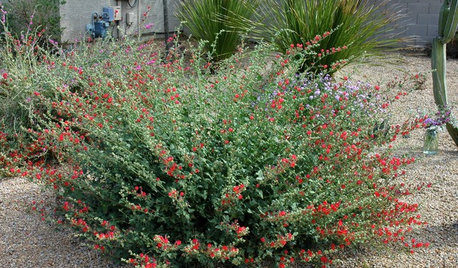Newly seeded lawn - sparse growth
ddlaz
9 years ago
Related Stories

FRONT YARD IDEASBefore and After: Front Lawn to Prairie Garden
How they did it: Homeowners create a plan, stick to it and keep the neighbors (and wildlife) in mind
Full Story
EARTH DAYThe Case for Losing the Traditional Lawn
Work less, help the environment and foster connections by just saying no to typical turf
Full Story
MOST POPULARMeet a Lawn Alternative That Works Wonders
Carex can replace turfgrass in any spot, is low maintenance and adjusts easily. Add its good looks and you’ve got a ground cover winner
Full Story
LANDSCAPE DESIGN15 Great Ideas for a Lawn-Free Yard
End the turf war for good with hardscaping, native grasses and ground covers that save water and are easier to maintain
Full Story
LANDSCAPE DESIGNGet Along With Less Lawn — Ideas to Save Water and Effort
Ditch the mower and lower your water bill while creating a feast for the eyes with diverse plantings and gathering places
Full Story
LANDSCAPE DESIGNCalifornia Says Goodbye to the Sprawling Ornamental Lawn
New state rules will effectively limit turfgrass to 25 percent of the landscape in most new and renovated yards
Full Story
GARDENING GUIDESUnleash Your Guerilla Gardener
Toss some seed bombs around the yard for easy, beneficial plantings
Full Story
GARDENING AND LANDSCAPINGGarden Musts for April
There's plenty to do in your garden this month without mucking around in the mud. Think seeds and let the rain do its work
Full Story
GARDENING GUIDESWhat Are Your Spring Gardening Plans?
Tearing out the lawn? Planting edibles? Starting from scratch? Tell us what you plan to change in your garden this year
Full Story
GARDENING GUIDESSouthwest Gardener's February Checklist
Orange you glad for a citrus-fertilizing reminder? And don't forget the recommended doses of vegetable seeds and cold-hardy flowers
Full StorySponsored
Columbus Area's Luxury Design Build Firm | 17x Best of Houzz Winner!
More Discussions







forsheems
ddlazOriginal Author
Related Professionals
Bellflower Landscape Architects & Landscape Designers · La Marque Landscape Architects & Landscape Designers · Oconomowoc Landscape Architects & Landscape Designers · Berkeley Heights Landscape Contractors · Brookfield Landscape Contractors · Concord Landscape Contractors · Dickinson Landscape Contractors · Madera Landscape Contractors · Mesa Landscape Contractors · Middle River Landscape Contractors · Sammamish Landscape Contractors · Setauket-East Setauket Landscape Contractors · South Portland Landscape Contractors · Wanaque Landscape Contractors · Quartz Hill Landscape Contractorsmorpheuspa (6B/7A, E. PA)
ddlazOriginal Author
morpheuspa (6B/7A, E. PA)
ddlazOriginal Author
ddlaz
morpheuspa (6B/7A, E. PA)
ddlaz
morpheuspa (6B/7A, E. PA)
ddlaz